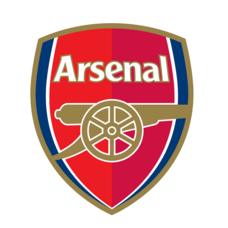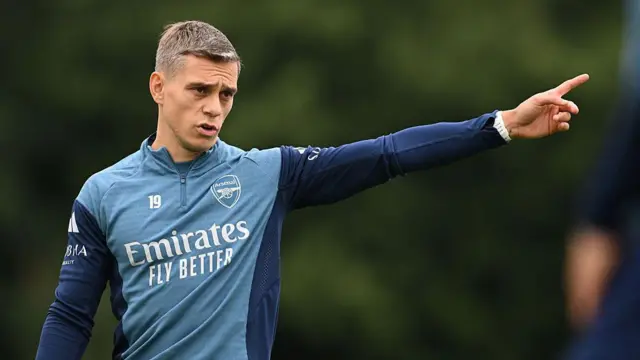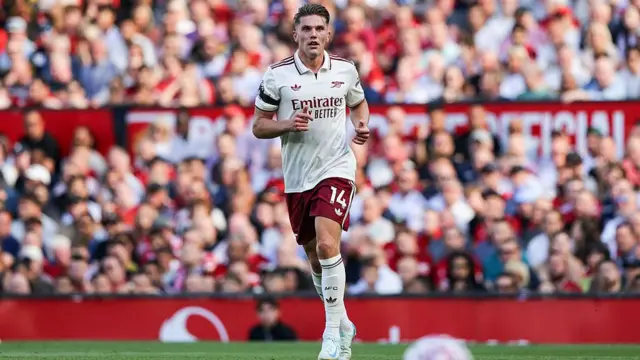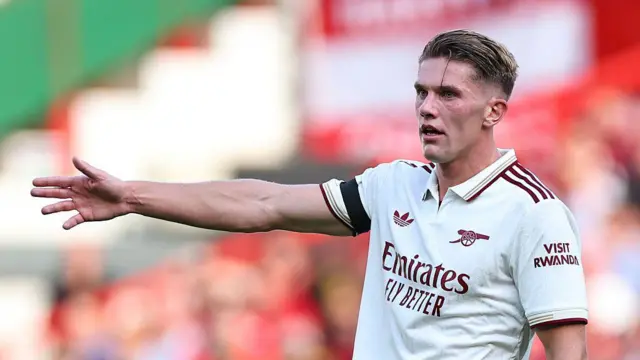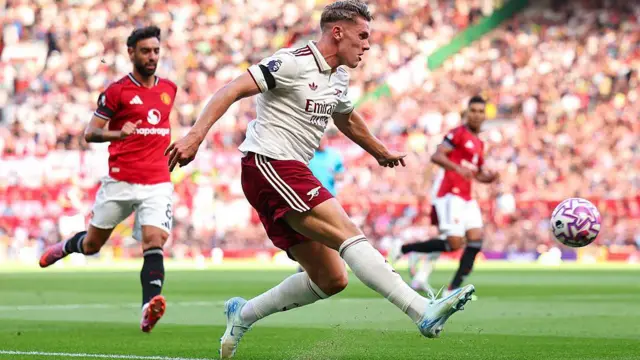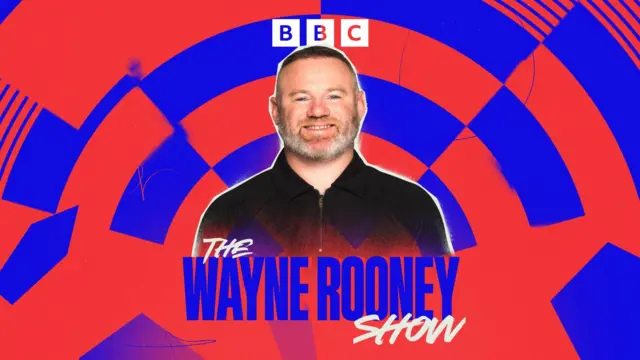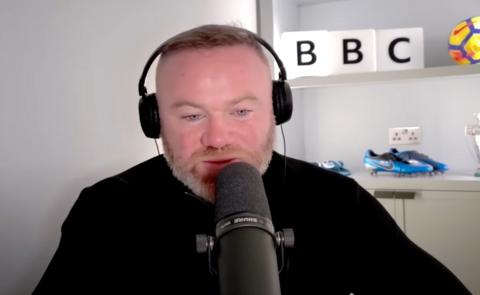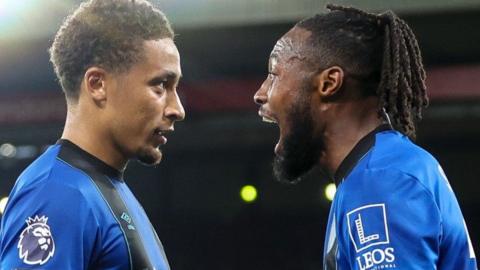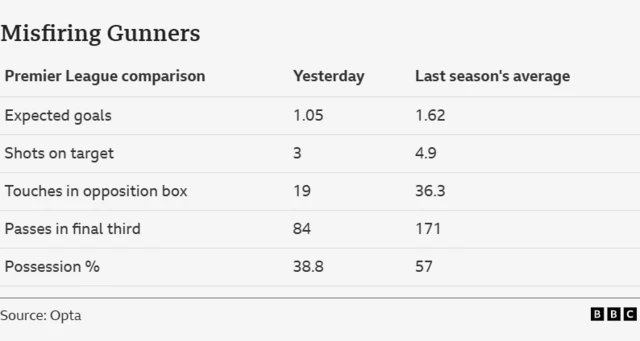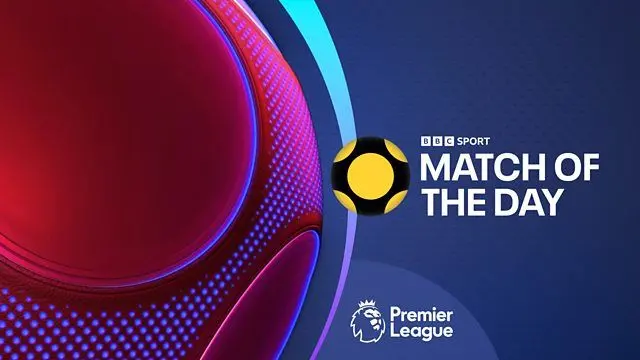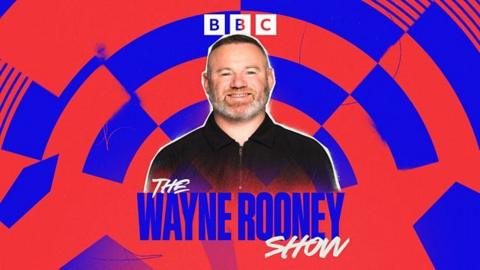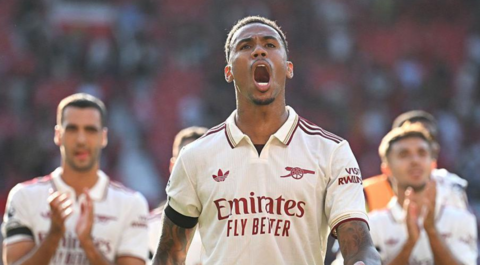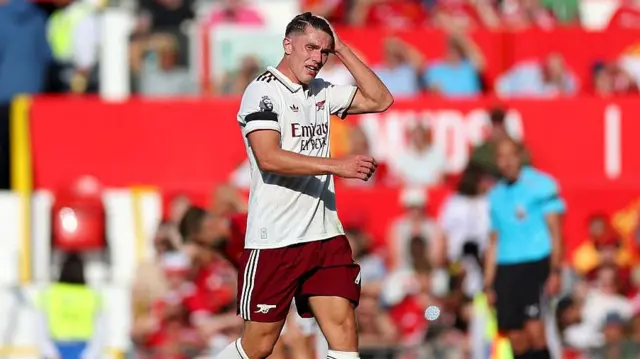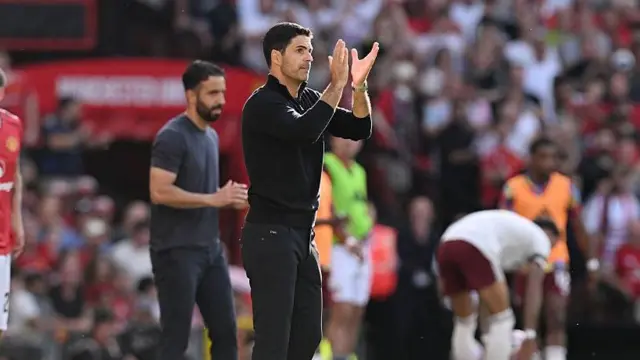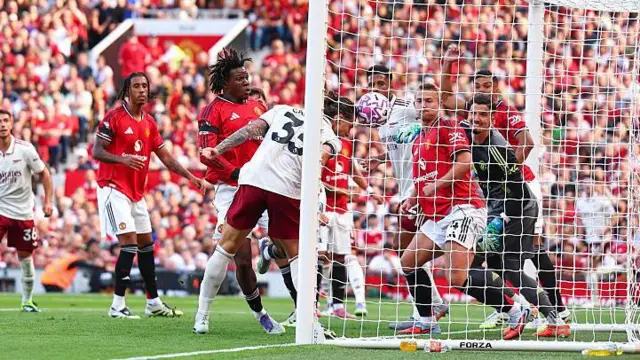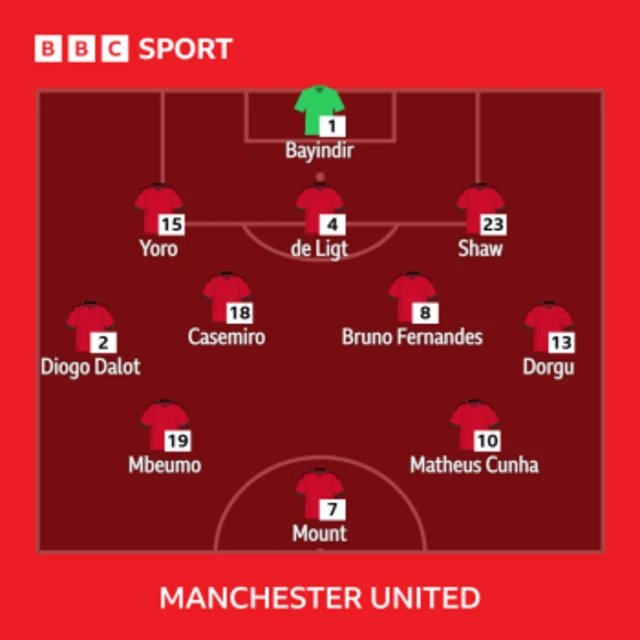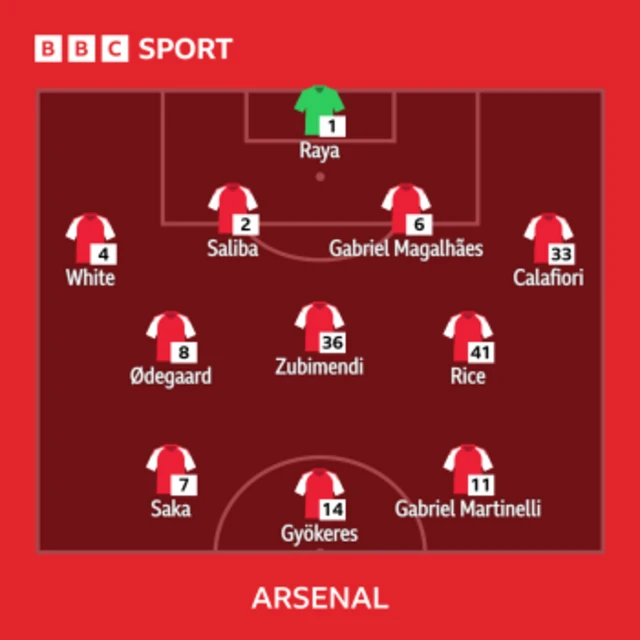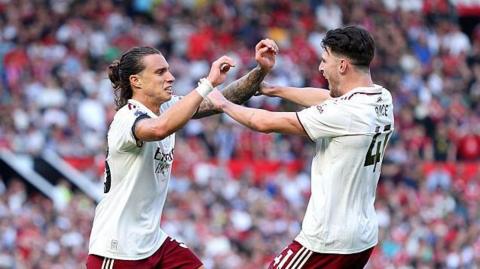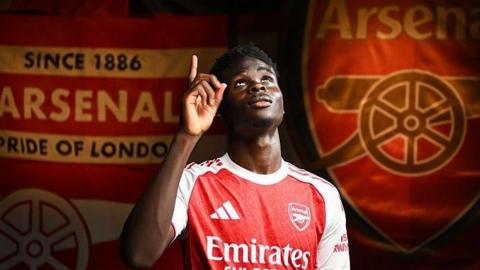Arsenal trying to be more direct: The Good, the Bad & the Uglypublished at 08:26 BST 20 August
Umir Irfan
Football tactics correspondent
 Image source, Getty Images
Image source, Getty ImagesMikel Arteta's Arsenal have taken an alternative approach to their recent summer transfer business. For a team who have dominated the ball, playing slowly and methodically for the last few seasons, they have now looked to introduce directness and counter-attacking threat.
Against Manchester United, Arsenal played more directly and it was to their detriment on the day. We saw numerous quick attacks consisting of players carrying the ball quickly upfield over large distances before trying to play through balls for the attackers. In seasons gone by, they would've likely opted to hold the ball, passing it backwards before restarting their attack.
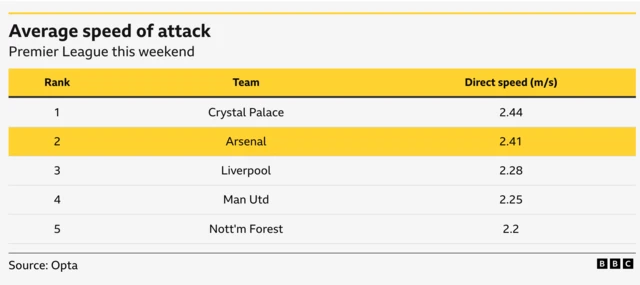
Martin Odegaard was primarily the player leading the majority of counter-attacks. Viktor Gyokeres' best attacking zones are in the inside right channel. As the Swede darted in behind, Odegaard's weight of pass was off and chances broke down. This made the game end-to-end, suiting United's quick attackers.
Odegaard being left footed here was slightly problematic too. Angle-wise, using a right-footed player would allow the pass to go towards the goal rather than curling away from it, making it easier for someone like Gyokeres to shoot early. Imagine Kevin de Bruyne's through balls (from right central midfield) to Erling Haaland if you're struggling to understand what I mean.
Although this style of play was ineffective in the opening game, there are positives. If Arsenal can get the final pass correct, they'll find themselves in clear goalscoring opportunities more often. How Arsenal balance their slower possession style with this newer, transitional quality will be an important thread to their season.
More on what we learned from the Premier League opening weekend
